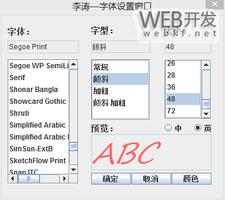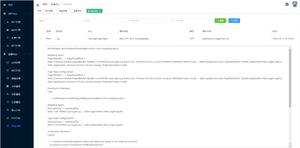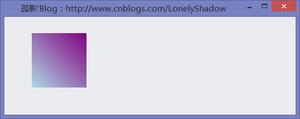使用Azure中的ASP.NET Core在Redis中保存用户会话
我正在使用Redis缓存在项目中保存一些内容。
我使用的是Azure(WebApp),当我在预生产环境与生产环境之间执行SWAP时,用户会话丢失了,他需要在我的网页中重新登录。
我正在使用Identity 3.0和UseCookieAuthentication。我想将“会话”存储在Redis中,以解决交换时遇到的问题。
我没有找到相关信息,有什么想法吗?谢谢
public void ConfigureServices(IServiceCollection services) {
// Add framework services.
services.AddApplicationInsightsTelemetry(Configuration);
// Registers MongoDB conventions for ignoring default and blank fields
// NOTE: if you have registered default conventions elsewhere, probably don't need to do this
//RegisterClassMap<ApplicationUser, IdentityRole, ObjectId>.Init();
AutoMapperWebConfiguration.Configure();
services.AddSingleton<ApplicationDbContext>();
// Add Mongo Identity services to the services container.
services.AddIdentity<ApplicationUser, IdentityRole>(o =>
{
// configure identity options
o.Password.RequireDigit = false;
o.Password.RequireLowercase = false;
o.Password.RequireUppercase = false;
o.Password.RequireNonLetterOrDigit = false;
o.Password.RequiredLength = 6;
o.User.RequireUniqueEmail = true;
o.Cookies.ApplicationCookie.CookieSecure = CookieSecureOption.SameAsRequest;
o.Cookies.ApplicationCookie.CookieName = "MyCookie";
})
.AddMongoStores<ApplicationDbContext, ApplicationUser, IdentityRole>()
.AddDefaultTokenProviders();
services.AddSession(options =>
{
options.IdleTimeout = TimeSpan.FromMinutes(60);
options.CookieName = "MyCookie";
});
services.Configure<AppSettings>(Configuration.GetSection("AppSettings"));
services.AddLocalization(options => options.ResourcesPath = "Resources");
// Caching This will add the Redis implementation of IDistributedCache
services.AddRedisCache();
services.Configure<RedisCacheOptions>(options =>
{
options.Configuration = Configuration["RedisConnection"];
});
services.AddCaching();
// Add MVC services to the services container.
services.AddMvc(options =>
{
options.CacheProfiles.Add("OneDay",
new CacheProfile()
{
Duration = 86400,
Location = ResponseCacheLocation.Any
});
options.CacheProfiles.Add("OneMinute",
new CacheProfile()
{
Duration = 60,
Location = ResponseCacheLocation.Any
});
})
.AddViewLocalization(options => options.ResourcesPath = "Resources")
.AddDataAnnotationsLocalization();
services.Configure<AppOptions>(Configuration.GetSection("AppOptions"));
}
// This method gets called by the runtime. Use this method to configure the HTTP request pipeline. public void Configure(IApplicationBuilder app, IHostingEnvironment env, ILoggerFactory loggerFactory)
{
//
loggerFactory.AddConsole(Configuration.GetSection("Logging"));
loggerFactory.AddDebug();
app.UseApplicationInsightsRequestTelemetry();
if (env.IsDevelopment())
{
app.UseBrowserLink();
app.UseDeveloperExceptionPage();
app.UseDatabaseErrorPage();
}
else
{
app.UseExceptionHandler("/Home/Error");
}
app.UseSession();
app.UseIISPlatformHandler(options => options.AuthenticationDescriptions.Clear());
app.UseApplicationInsightsExceptionTelemetry();
app.UseStaticFiles();
app.UseIdentity();
app.UseCookieAuthentication(options =>
{
options.AutomaticAuthenticate = true;
options.LoginPath = new PathString("/Account/Login");
options.AutomaticChallenge = true;
});
var requestLocalizationOptions = new RequestLocalizationOptions
{
// Set options here to change middleware behavior
SupportedCultures = new List<CultureInfo>
{
new CultureInfo("en-US"),
new CultureInfo("es-ES")
},
SupportedUICultures = new List<CultureInfo>
{
new CultureInfo("en-US"),
new CultureInfo("es-ES")
},
RequestCultureProviders = new List<IRequestCultureProvider>
{
new CookieRequestCultureProvider
{
CookieName = "_cultureLocalization"
},
new QueryStringRequestCultureProvider(),
new AcceptLanguageHeaderRequestCultureProvider
{
}
}
};
app.UseRequestLocalization(requestLocalizationOptions, defaultRequestCulture: new RequestCulture("en-US"));
app.UseFacebookAuthentication(options =>
{
options.AppId = "*****";
options.AppSecret = "****";
});
app.UseGoogleAuthentication(options =>
{
options.ClientId = "*****";
options.ClientSecret = "***";
});
app.UseMvc(routes =>
{
routes.MapRoute(
name: "default",
template: "{controller=Home}/{action=Index}/{id?}");
routes.MapRoute(
name: "view",
template: "{customName}/{id}",
defaults: new { controller = "View", action = "Index" });
});
}
回答:
会话未链接到身份验证,您正在尝试以错误的方式解决它。
所有表单身份验证票证和cookie均使用数据保护层进行加密和签名。您遇到的问题是由于未保存加密密钥,并且应用程序彼此隔离。
为了解决它,您必须共享两个加密密钥并在代码中设置一个应用程序名称。老实说,我建议你不要。试生产不是现场服务,您不应该一次对两者进行身份验证。
如果您觉得必须这样做,则需要共享加密密钥环,并设置一个固定的应用程序名称。您可以通过共享文件夹或通过将密钥存储在共享位置(例如SQL或Azure存储)来共享密钥。为此,您必须通过实现IXmlRepository来编写自己的密钥环提供程序。共享密钥后,就可以在数据保护配置过程中使用SetApplicationName来设置固定的应用程序标识符。
以上是 使用Azure中的ASP.NET Core在Redis中保存用户会话 的全部内容, 来源链接: utcz.com/qa/403416.html







